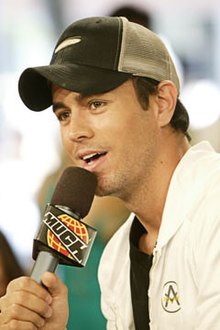Piano Sheets > Enrique Iglesias Sheet Music > Hero (ver. 2) Piano Sheet
Hero (ver. 2) by Enrique Iglesias - Piano Sheets and Free Sheet Music

About the Song
Other avaliable versions of this music sheet: Version 2 Version 4 Version 5 Version 6
"Hero" is a single released by Enrique Iglesias from his second English album Escape and was written for his good friend Simon Baxendale.
Enrique first released the song to radio in late November 2001 to a positive critical and commercial reception. After the September 11th attacks on the World Trade Center, the song was one of the few songs chosen by Radio DJs in New York to be remixed with audio from police, firefighters, civilians at Ground Zero and Politicians commenting on the attacks.
He was asked to sing the song live at the benefit concert America: A Tribute to Heroes ten days after the September 11, 2001 attacks. Iglesias broadcast his performance from a warehouse in New York alongside Bruce Springsteen, Bon Jovi, and Sheryl Crow, the location of the warehouse was kept secret in case of further attacks. It was Iglesias' first televised performance of the song. He had performed the.
Download this sheet!
About the Artist

Random article
The essentials of piano sheet music Most people have the notion that sheet music is a very complicated notation and reading it very difficult. However, this is not true as understanding sheet music piano is just a matter of transcribing the various musical notes written.
Uses of sheet music
Piano sheet music is nothing but piano notes written in standard notations. You can avail such free sheet music online from various websites. The main use of sheet music piano is to help aspiring musicians recreate the same sequence of notes as performed by the composer of the piece. It is a method where a specific musical composition is recorded in written form using music notes. The ultimate aim of reading sheet music is to recreate the same score in as accurate a manner as is possible.
(More...)
